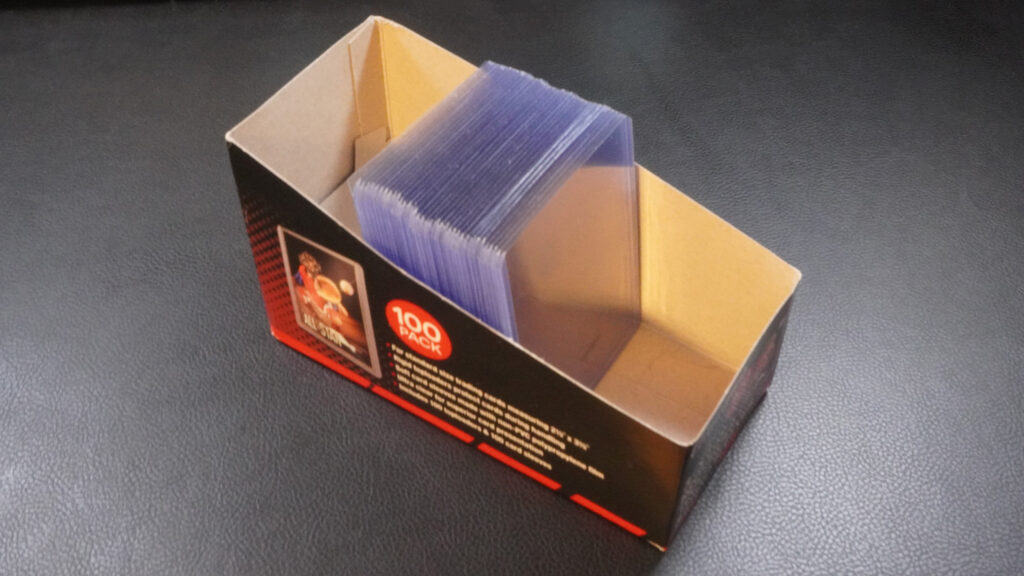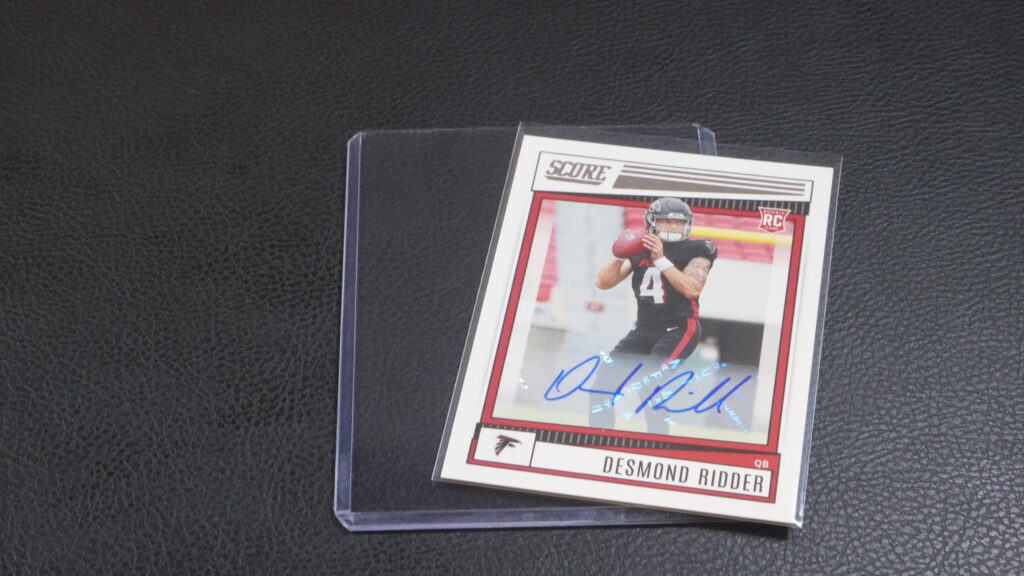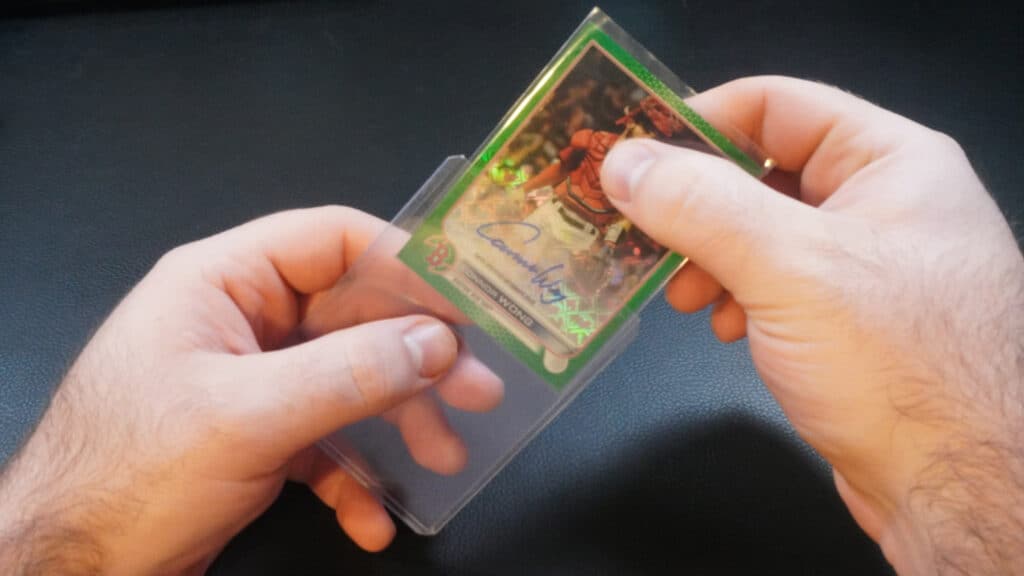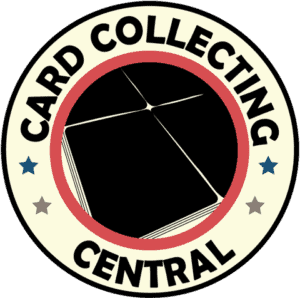
Toploaders are one of the most important tools at the disposal of card collectors to protect their collections.
But since plastic is used to provide the rigid structure of the toploader, can this pose a risk to damage over time?
Modern toploaders pose little to no risk of causing damage to cards over time.
Improper storage in extreme environments, such as humidity, and temperature, and not utilizing card sleeves with toploaders can be external sources that can lead to possible issues down the road, however, these can be mitigated.
Let’s dive into why there is sometimes a belief that toploaders can cause issues, along with how to properly store your toploaded cards, and how to use card sleeves to ensure your cards are safe.
Analyzing Aging Toploaders For Your Cards
For most newer toploaders purchased from reputable sources such as BCW, Cardboard Gold, and Ultra Pro, running into issues from the toploaders themselves is rare.
Some older toploaders and others from uncommon sources may have issues pop up, such as the yellowing of the plastic the toploader is made of.
This is normally due to extensive exposure to UV light, however, this can sometimes occur based on the plastic being used for the toploader.
These types of plastic are typically found in lower-quality toploaders.
This yellowing will normally not pose a threat of damage to your cards, however, visually it will be a hindrance compared to a toploader that is crystal clear.
It is highly recommended if you notice any toploaders that are yellowed to replace them.
For standard card sizes, toploaders from BCW, or toploaders from Ultra Pro are great options.
All in all, there is little to no evidence that aging toploaders will have any impact on the condition of your cards, however, it is still best practice to follow proper storage to make sure outside sources don’t impact your cards, along with the best practices such as utilizing the combination of toploaders with card sleeves.

The Importance of Using Card Sleeves With Your Toploaders
Though toploaders are excellent at protecting against scratches from outside sources, there is still a risk from inside.
Because of the structure of toploaders, the opening is not closing which can allow dust and other contaminants to get inside.
This is where card sleeves play their role to provide the perfect combination of protection.
The card sleeve acts as a thin glove layer that surrounds the card from these particles.
This prevents the cards from getting scratched when being pulled out of the toploader, or if the card has some type of movement inside the toploader.
High-quality, archival grade (sometimes labeled as acid-free) card sleeves also provide a non-pvc layer between the card and toploader to prevent any type of issue, such as autographs sticking to the plastic, or in the rare event a chemical reaction occurring with the toploader plastic which is typically made of PVC plastic.
I wrote a whole article on the card sleeve, and toploader combo if you’d like to learn more.
Impact of Environment and Storage On Toploaded Cards Long-Term
The environment is an outside source that can have a huge role in how toploaders and your cards inside will perform over time.
Three main factors of the environment that play key roles are humidity, temperature, and light exposure.
Light Exposure
The big impact light can have on your cards is fading, both the card artwork and if autographed, the autographs themselves.
Its impact on toploaders, particularly older ones, is the yellowing effect discussed earlier.
This will in turn change the condition and value of the card.
For most toploaders in general, UV protection is not common and therefore it is important to bear in mind your storage location to make sure your cards are not being kept in direct sunlight.
Temperature
Extreme temperatures both hot and cold, and quick temperature changes can cause the plastic of the toploader to degrade.
In extremely high temperatures, the plastic can become softer, reducing its rigidness, resulting in the possibility of warping, to a point where the toploader has a curve to it, and can lead to that same curve being reflected into the card inside.
Extreme cold temperatures, as with many other plastics, can cause the toploader to become brittle, leading to possible cracking of the plastic, and reducing its impact in protecting the card from liquids, dust, and other debris.
Extreme changes can also have these same results, and in some cases increase the rate at which they occur.
It is therefore important to make sure the place you are storing your toploaders is in a controlled temperature environment.
Humidity
This environmental issue has most of its impact on the card inside the toploader, instead of the toploader itself.
Due to the design of the toploader, and the top being opened, there does exist a possibility of moisture being able to become trapped inside the toploader when left in high humidity environments.
This can result in mold growth, as well as the cards warping and swelling, resulting in damage that may not be able to be reversed.
Autographs can be made to degrade with trapped moisture.
This possibility is another reason to try to use card sleeves with every toploader to add that extra layer in the event of moisture getting trapped.
Just like with temperature, the storage environment should also be in a place with controlled humidity levels.

Best Practices For Using Toploaders Successfully
To increase the benefits of toploader, ensure that they are not posing any issues with your cards, and help prevent any outside sources from causing any problems, it is best to follow some best practices:
- Choose Toploaders from Quality Sources: Not all toploaders are made equal, and choosing to choose quality over price can impact your overall experience with toploaders and your card collection. Cheaper toploaders can be made with subpar materials that could pose issues down the line.
- Proper Insertion: Be cautious when placing cards into toploaders, making sure the edges of the card are not being damaged, and not using too much force to get the card inside. Forcing a card can cause the card to bend, if it requires a decent amount of force to put the card inside the toploader, then you probably are using the incorrect size for that card.
- Utilize Card Sleeves: This helps also with inserting and removing the cards from the toploaders, as there is some protection on the cards to prevent corner damage and scratches.
- Keeping An Eye On The Storage Environment: Extreme temperature and humidity changes can cause damage to both the toploader and card. Try to keep your toploaded cards in a controlled environment.
- Regular Inspection: Part of the enjoyment of the card collection hobby is to view your cards. When doing so make sure to periodically check your stored toploaded cards. This helps to make sure no issues are starting to pop up and make your storage environment not causing problems.
Final Thoughts
Toploaders are an essential tool at the disposal of card collectors that can give the perfect amount of protection for your cards, and with nearly no risk of causing damage to them for any length of time in use.
Purchasing quality toploaders, using the proper techniques, and establishing the proper environment for storing your toploaders will allow your toploaders to provide the excellent benefits they offer in protecting your cards for years to come
